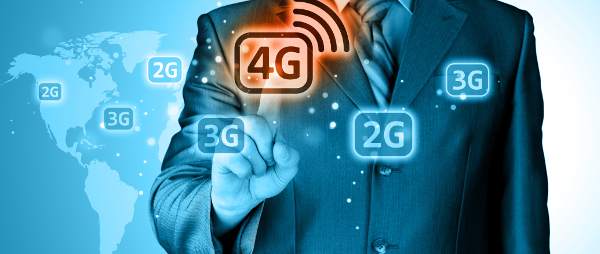
1. China
With the country’s first 4G rollouts in December 2013, the take-up of 4G services in China is likely be at twice the rate of its earlier move to 3G.
Research from GSMA Intelligence forecasts that there will be almost 900 million 4G mobile connections in the country by the end of 2020, up from around 100 million expected this year.
Competition in the mainland’s 4G mobile services market is expected to intensify this quarter after smaller carriers China Unicom and China Telecom were both granted licences to conduct a hybrid network trial in 16 cities across the country in June.
This move should pose a challenge to dominant player China Mobile, which is building out a widespread 4G network using LTE TDD technology only.
2. Brazil
An increasing number of Brazilians are making the switch to the super-fast network after requirements were made to roll out 4G in World Cup host cities across the country.
Research from wireless industry trade association 4G Americas found that in the first six months of 2014 alone, the number of 4G mobile technology users had increased by 50%, driven by investments made by local providers ahead of the World Cup and the Olympic Games in 2016.
Chris Pearson, President of 4G Americas, said: "Brazil is leading the acquisition of LTE connections in the region, speared by the World Cup and Olympic events that have progressed the deployment of LTE network coverage.
"The demand for mobile broadband services across the region continues to positively affect the increase in LTE subscriptions."
Other research from Brazilian telecommunications agency Anatel found that out of the 273 million mobile phones in operation in Brazil, about 2.4 million handsets are LTE-ready.
Brazilian carrier Nextel last month also switched on its 4G network in the city, providing the services in 19 regions around the city. And Brazil’s Ministry of Communications has finalised a schedule under which analogue TV services will be phased out across the country by November 2018, freeing up spectrum for expanding 4G mobile broadband services nationwide.
3. The UK
One of the last major countries in Europe to launch LTE, the number of users making the switch is on the rise as more coverage areas hit the market.
O2’s 4G network, which already covers a third of the UK population, recently launched in Northern Ireland, extending to Belfast and Lisburn as part of a £15m investment. The company claims to have secured more than one million LTE customers since its launch last August.
EE is also rolling out its 4G services to a further 14 towns across the UK as it looks to maximise its investment in rural connectivity, while Vodafone is expanding its 4G network to cover five more UK cities, which means it will soon serve one million more customers. And UK Broadband, owned by Hong Long-based telecoms giant PCCW, launched 4G in London with Relish last month.
4. New Zealand
Mobile phone operator 2degrees switched on its 4G network last month in 72 sites in central Auckland, while it plans to triple the available 4G sites in the wider Auckland region by the end of this year.
Meanwhile, Vodafone, which launched its 4G service in central Wellington and Lower Hutt last year, is currently conducting trials on 4G small cells for the enterprise market, while Telecom is hoping for more than a hundred additional sites to go live before the end of the year, according to the New Zealand Herald.
"We think these faster speeds will quickly become the ‘new normal’ for New Zealanders, just as 3G speeds did when they were introduced a few years ago," Telecom’s retail CEO Chris Quin said.
5. India
So far the country’s telecom provider, Bharti Airtel, has only launched 4G, while the likes of Reliance Jio Infocomm and Vodafone among others are planning to launch it commercially by 2015.
Chinese smartphone maker Huawei is also planning to launch 4G smartphones at $100 in efforts to boost 4G adoption, while Samsung is reportedly working with Reliance Jio on 4G tablets and smartphones.
Gartner analyst Rishi Tejpal recently told Indian publication IANS: "Affordable service and device pricing will be very important in India. The early adopters will be very niche and small market. But for 4G to become mass market, the pricing should be at par with the 3G prices at that time.
"Charging a premium for LTE services will weaken the adoption rates and service uptake."






